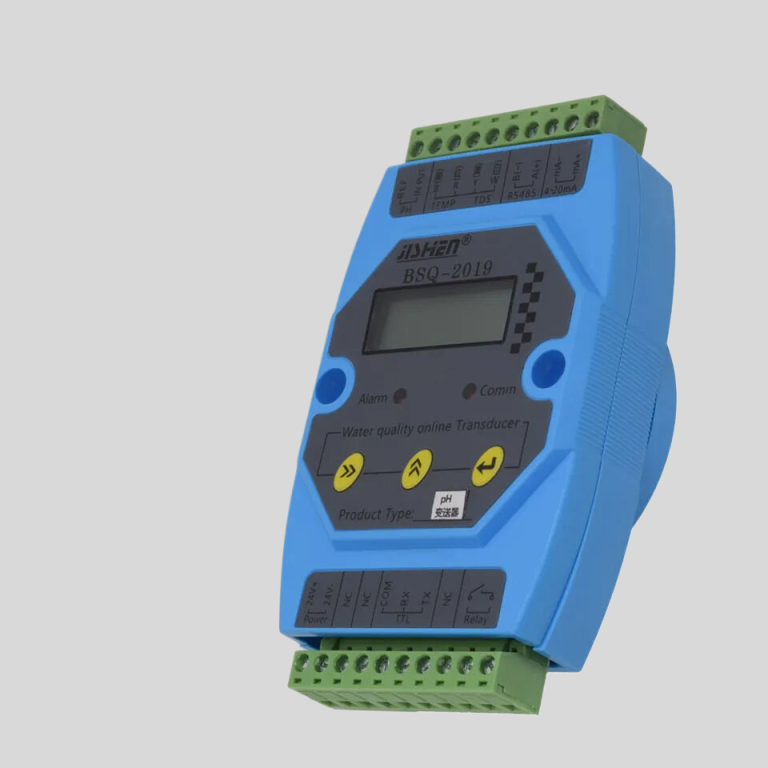Understanding the Importance of Temperature Compensation in conductivity meter Readings
Conductivity meters are essential tools used in various industries to measure the ability of a solution to conduct electricity. This measurement is crucial in determining the concentration of ions in a solution, which can provide valuable information about the quality and composition of the solution. However, one factor that can significantly affect the accuracy of conductivity meter readings is temperature.
Temperature has a direct impact on the conductivity of a solution. As temperature increases, the ions in the solution move more rapidly, increasing the conductivity. Conversely, as temperature decreases, the ions move more slowly, decreasing the conductivity. This means that without proper temperature compensation, conductivity meter readings can be inaccurate and misleading.
Temperature compensation is the process of adjusting conductivity meter readings to account for the effects of temperature on conductivity. This is done by either manually inputting the temperature of the solution into the meter or using a built-in temperature sensor to automatically compensate for temperature changes. By doing so, the conductivity meter can provide more accurate and reliable readings regardless of fluctuations in temperature.
One of the key reasons why temperature compensation is important in conductivity meter readings is to ensure consistency and comparability of results. Without temperature compensation, readings taken at different temperatures may not be directly comparable, making it difficult to track changes in conductivity over time or between different samples. By compensating for temperature, conductivity meter readings can be standardized and normalized, allowing for more meaningful comparisons and analysis.
Another important reason for temperature compensation in conductivity meter readings is to improve the accuracy of measurements. As mentioned earlier, temperature has a significant impact on conductivity, and failing to account for this can lead to errors in readings. By compensating for temperature, conductivity meter readings can be corrected to reflect the true conductivity of the solution, providing more reliable and precise results.
| ROS-360 Water Treatment RO Programmer Controller | ||
| Model | ROS-360 Single Stage | ROS-360 Double Stage |
| Measuring range | Source water0~2000uS/cm | Source water0~2000uS/cm |
| \u3000 | First level effluent 0~1000uS/cm | First level effluent 0~1000uS/cm |
| \u3000 | secondary effluent 0~100uS/cm | secondary effluent 0~100uS/cm |
| Pressure sensor(optional) | Membrane pre/post pressure | Primary/ secondary membrane front/rear pressure |
| Flow Sensor(optional) | 2 channels (Inlet/outlet flow rate) | 3 channels (source water, primary flow,secondary flow) |
| IO input | 1.Raw water low pressure | 1.Raw water low pressure |
| \u3000 | 2.Primary booster pump inlet low pressure | 2.Primary booster pump inlet low pressure |
| \u3000 | 3.Primary booster pump outlet high pressure | 3.Primary booster pump outlet high pressure |
| \u3000 | 4.High liquid level of Level 1 tank | 4.High liquid level of Level 1 tank |
| \u3000 | 5.Low liquid level of Level 1 tank | 5.Low liquid level of Level 1 tank |
| \u3000 | 6.Preprocessing signal\u00a0 | 6.2nd booster pump outlet high pressure |
| \u3000 | \u3000 | 7.High liquid level of Level 2 tank |
| \u3000 | \u3000 | 8.Preprocessing signal |
| Relay output (passive) | 1.Water inlet valve | 1.Water inlet valve |
| \u3000 | 2.Source water pump | 2.Source water pump |
| \u3000 | 3.Booster pump | 3.Primary booster pump |
| \u3000 | 4.Flush valve | 4.Primary flush valve |
| \u3000 | 5.Water over standard discharge valve | 5.Primary water over standard discharge valve |
| \u3000 | 6.Alarm output node | 6.Secondary booster pump |
| \u3000 | 7.Manual standby pump | 7.Secondary flush valve |
| \u3000 | \u3000 | 8.Secondary water over standard discharge valve |
| \u3000 | \u3000 | 9.Alarm output node |
| \u3000 | \u3000 | 10.Manual standby pump |
| The main function | 1.Correction of electrode constant | 1.Correction of electrode constant |
| \u3000 | 2.TDS alarm setting | 2.TDS alarm setting |
| \u3000 | 3.All working mode time can be set | 3.All working mode time can be set |
| \u3000 | 4.High and low pressure flushing mode setting | 4.High and low pressure flushing mode setting |
| \u3000 | 5.Manual/automatic can be chosen when boot up | 5.Manual/automatic can be chosen when boot up |
| \u3000 | 6.Manual debugging mode | 6.Manual debugging mode |
| \u3000 | 7.Spare parts time management | 7.Spare parts time management |
| Expansion interface | 1.Reserved relay output | 1.Reserved relay output |
| \u3000 | 2.RS485 communication | 2.RS485 communication |
| Power supply | DC24V\u00b110% | DC24V\u00b110% |
| Relative humidity | \u226685% | \u226485% |
| Environment temperature | 0~50\u2103 | 0~50\u2103 |
| Touch screen size | Touch screen size: 7 inches 203*149*48mm (Hx Wx D) | Touch screen size: 7 inches 203*149*48mm (Hx Wx D) |
| Hole Size | 190x136mm(HxW) | 190x136mm(HxW) |
| Installation | Embedded | Embedded |
Furthermore, temperature compensation is essential for ensuring the validity of conductivity measurements in different environments. Solutions are often measured in a wide range of temperatures, from room temperature to extreme hot or cold conditions. Without temperature compensation, conductivity meter readings may be skewed by temperature variations, leading to inaccurate results. By compensating for temperature, conductivity meter readings can be adjusted to account for these variations, ensuring the validity and reliability of the measurements.
In conclusion, temperature compensation is a critical aspect of conductivity meter readings that should not be overlooked. By accounting for the effects of temperature on conductivity, conductivity meters can provide more accurate, consistent, and reliable readings. This is essential for ensuring the validity of measurements, improving the accuracy of results, and enabling meaningful comparisons and analysis. Therefore, understanding the importance of temperature compensation in conductivity meter readings is essential for anyone using these instruments in their work.







